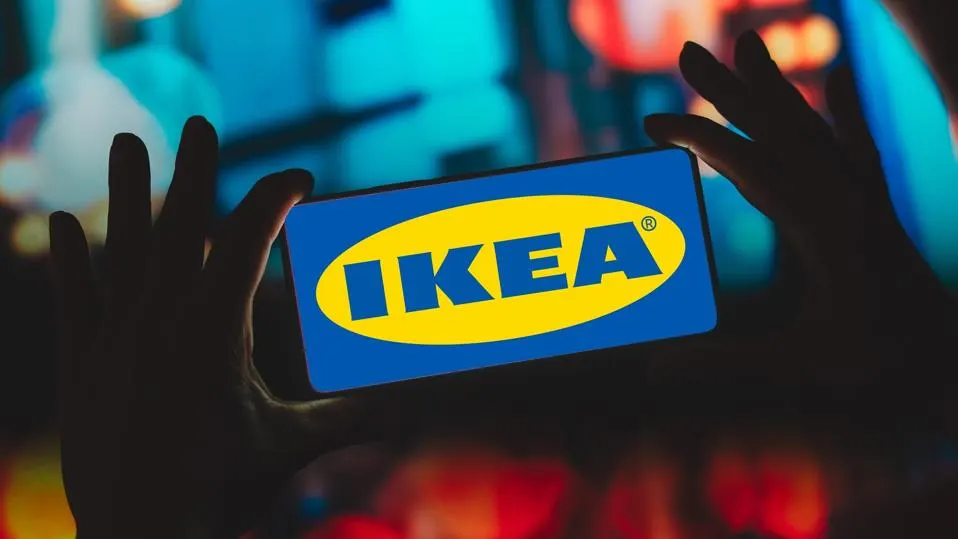7 Ways Retailers Are Using Generative AI To Provide A Better Shopping Experience
11 March 2024
Generative AI is a transformative tool that will impact almost all industries. And retail is no exception. From smoothing out the online shopping journey to providing personalized products and a whole lot in between, generative AI can help retailers delight customers – and that goes for shopping in physical stores as well as online stores.
Here are seven generative AI use cases that all retailers should be exploring.

1. AI Shopping Assistants Enable Buying-By-Chatting
You've no doubt interacted with customer service chatbots. Well, thanks to generative AI, we're now seeing a rise in virtual shopping assistants – conversational AI tools that help customers find what they're looking for simply by typing or speaking what they want. (In some cases, even by sharing a photo to indicate a specific product they want to find.) Particularly on large e-commerce sites, this makes navigating a lot easier. No more trying to figure out which category your desired product falls under or grappling with multiple search filters. Just ask for what you want.
eBay’s ShopBot feature is a great example of an AI personal shopping assistant. It’s designed to help customers cut through eBay’s enormous number of listings to find the right deal for them. And it works with text prompts, voice prompts, and even photos.
Complex purchases can also be aided with an AI shopping assistant. At Expedia, for instance, customers can now plan their travel arrangements by having an open-ended “chat” with the app, from discussing accommodation to pinpointing the best sights to see. It’s as close as you can get to the old-school travel agent experience in app form.
2. More Realistic Virtual Try-On Features
Until now, virtual try-on features have been fairly rudimentary – for example, picking from a small list of body shapes to see what a particular garment might look like on the customer. However, generative AI brings a new level of realism to such features. For example, Google has introduced virtual try-on technology that uses generative AI to show clothes “on a wide selection of real models.” Google says the generative AI model can take just one picture of an item of clothing and accurately show how it would cling, drape, etc., on a diverse range of real models from sizes XXS to 4XL and representing different skin tones and ethnicities. The feature is available for brands such as Anthropologie and H&M.
In the future, customers will be able to generate a realistic avatar of themselves based on a photo and their exact measurements and then be able to generate an image of themselves wearing a particular outfit (even combining different items to see how well they go together). Generative AI also makes it possible to generate an image of the customer wearing those items in a range of different settings (such as the beach or a formal event), all to help them fully visualize whether the product is right for them.
3. Handy Summaries Of Customer Reviews
Imagine you want to check out a simple product only to find hundreds of reviews offering a multitude of (sometimes conflicting) opinions. That’s the position customers find themselves in every day. Well, thanks to generative AI’s ability to understand and summarize lengthy pieces of text, this frustrating experience could be a thing of the past. Amazon is just one retailer beginning to experiment with AI-generated summaries of reviews – in Amazon’s case, condensing customer reviews into one digestible paragraph.
4. Metaverse Stores
With augmented reality and virtual reality becoming more mainstream, generative AI can help to create immersive virtual shopping experiences. This ties in with the concept of the metaverse – immersive virtual worlds where we can shop, game, work and more. Forward-thinking retailers are already building a presence in the metaverse, creating immersive, interactive, and personalized virtual stores. Nike is a real leader in the metaverse space with its part-game, part-showroom Nikeland on the Roblox metaverse platform. Nikeland features buildings, arenas, and games, as well as a virtual showroom complete with digital products.
So, where does generative AI fit into this? Well, technology can help make such virtual stores and experiences more responsive. For example, as a user navigates a virtual store, AI can generate personalized product placements and even virtual sales assistants tailored to the user’s shopping history and preferences.
5. Personalized Customer Journeys
One of the most tantalizing benefits of generative AI is that it allows retailers to offer a more personalized customer journey. AI shopping assistants are one way to do that. But generative AI can do so much more. For example, the technology can be used to create custom promotions and offers for each shopper – by analyzing their individual buying habits and preferences. Say a customer often purchases sustainable products; the AI might generate special discounts or bundle offers related to eco-friendly items during their next visit. This can be done automatically and at scale.
Generative AI can also be used to develop highly personalized loyalty programs that evolve based on each member’s interactions with the brand. So, instead of a generic point system, members might be offered personalized challenges, rewards tailored to their preferences, or unique experiences curated just for them.
Crafts retailer Michaels Stores is using generative AI to better understand how different customer segments engage with different messages. As such, it has gone from personalizing 20 percent of email campaigns to personalizing an impressive 95 percent of email campaigns – a move that has boosted the click-through rate for emails by 25 percent (41 percent for SMS campaigns).
6. Personalized Products
Not only can generative AI suggest products that customers are likely to be interested in, but it can also be used to help customers design their own unique, personalized products. Fashion tech specialists Space Runners have created a generative AI tool that allows people to design their own unique clothing just by using simple text prompts. Called Ablo, the AI design tool allows individuals to effectively become their own fashion brand – and for brands, Ablo allows amazing co-creation opportunities with their customers.
7. What About The Physical In-Store Experience?
So far, we’ve focused on the online shopping experience. But shopping in a physical store could also be improved by generative AI. The technology can be used to create responsive store displays that change based on real-time data. Say, for example, a cold front is moving into an area; a clothing store's digital window display might adapt to showcase winter gear and generate a live snowfall backdrop to attract people in. Combine this with personalized customer data, and, in the future, store displays could even adapt to each customer, showing them products they might be interested in finding in the store.
We may also see smart mirrors integrated with generative AI technology to give customers an accurate representation of what a product would look like on them – like the virtual try-on features we’re beginning to see on websites and apps, but in a physical store. But why would customers want to try on clothes virtually when they’ve traveled to a physical store? For one thing, the store in question may not have all the styles, colors, and sizes available to try on.
Coach, a handbag and accessory brand, has experimented with smart mirror technology. To celebrate the launch of its Tabby Bag campaign, the brand installed a smart mirror in its Soho New York store. Customers using the mirror could see themselves with different digital variations of the bag (and other digital effects, like butterfly wings). They could also download their image to share online. So, as an added bonus, Coach benefitted from free social marketing thanks to users sharing their images on social media.
Related Articles
Sex And Intimacy In The Generative AI Era
Sex and technology have long been intertwined – millions of us use dating apps to find partners, and some of the earliest commercial online activity revolved around pornography.[...]
Generative AI Sucks: Meta’s Chief AI Scientist Calls For A Shift To Objective-Driven AI
In a landscape where generative AI is hailed as the frontier of technological innovation, Yann LeCun, Chief AI Scientist at Meta, presents a contrarian viewpoint that challenges the status quo.[...]
Instacart Harnesses Generative AI To Revolutionize Grocery Delivery Experience
Grocery delivery and pickup service Instacart is not shy about adopting new technologies. So, it makes sense that the company has embraced generative AI across the business.[...]
Responsible AI: Why Privacy Is An Essential Element
Today, people often talk about “responsible” AI use, but what do they really mean?[...]
The Amazing Ways IKEA Is Using Generative AI
Global furniture retailer IKEA has long been at the forefront of tech-driven retail innovation.[...]
Generative AI Is Coming To Your Home Appliances
Across all industries, organizations are rapidly embracing generative AI. Among them, makers of home appliances like fridges and ovens.[...]
Sign up to Stay in Touch!
Bernard Marr is a world-renowned futurist, influencer and thought leader in the fields of business and technology, with a passion for using technology for the good of humanity.
He is a best-selling author of over 20 books, writes a regular column for Forbes and advises and coaches many of the world’s best-known organisations.
He has a combined following of 4 million people across his social media channels and newsletters and was ranked by LinkedIn as one of the top 5 business influencers in the world.
Bernard’s latest book is ‘Generative AI in Practice’.










Social Media